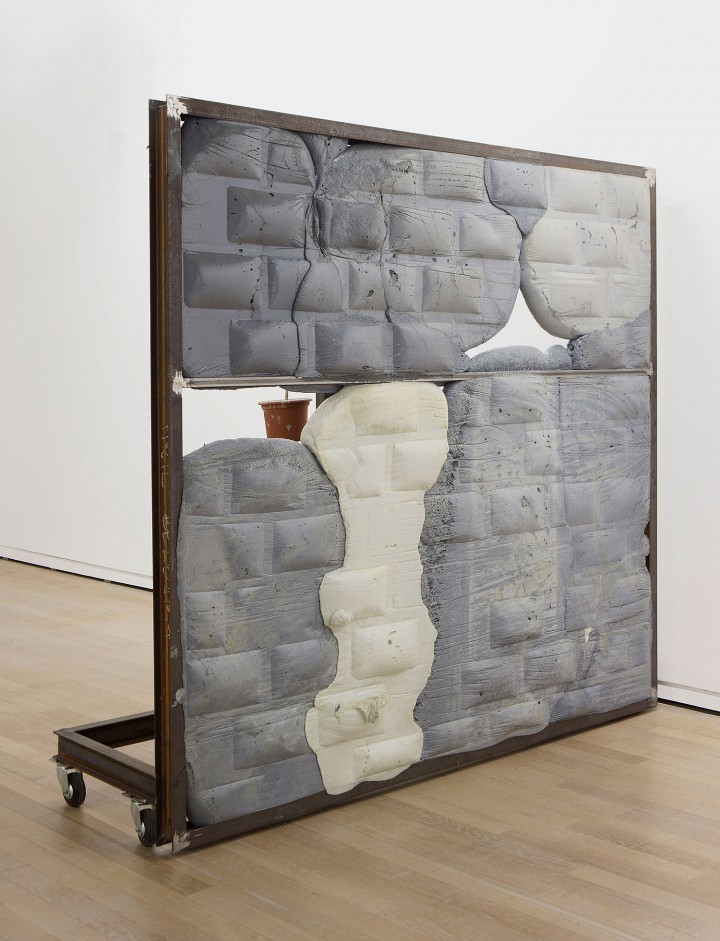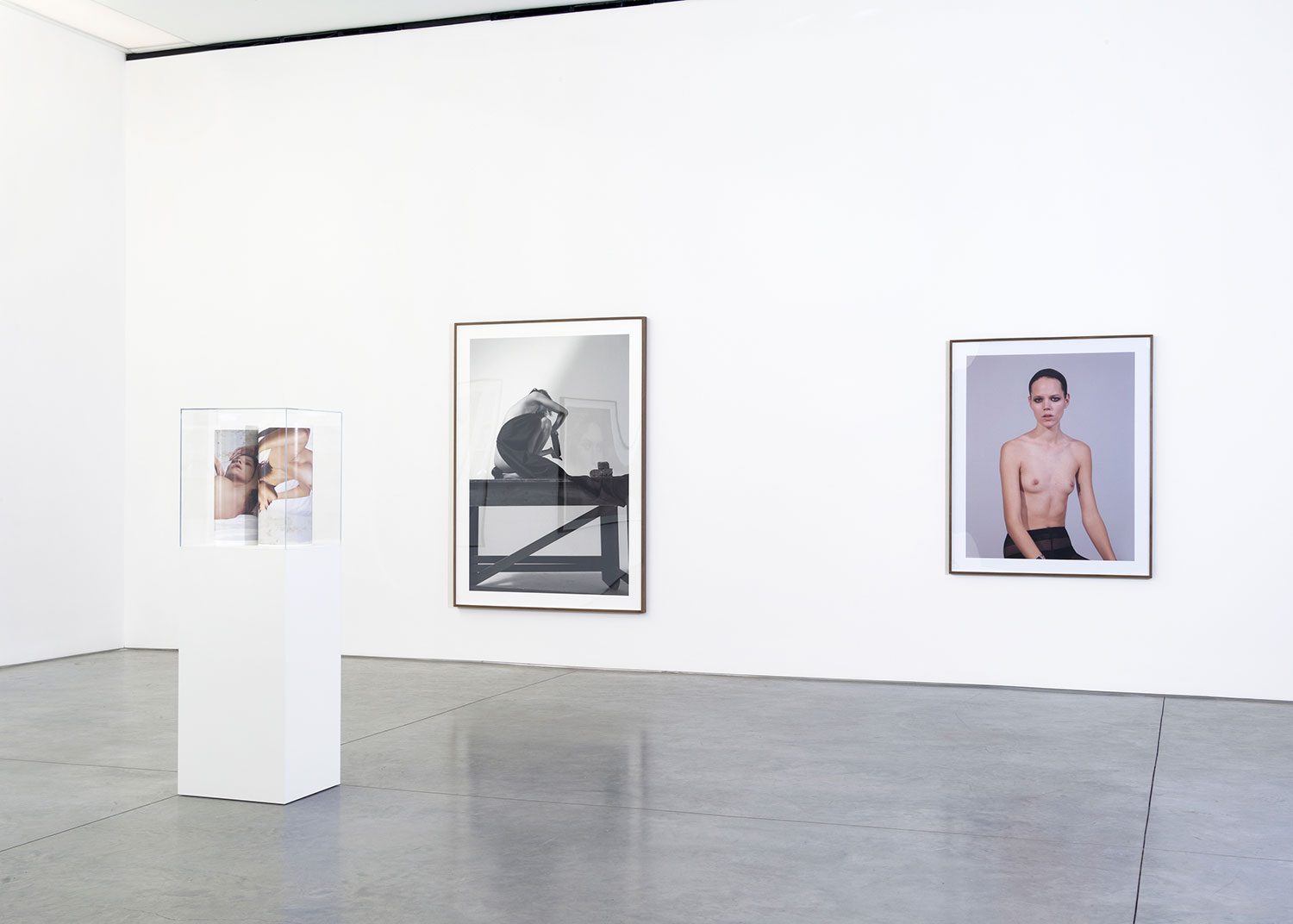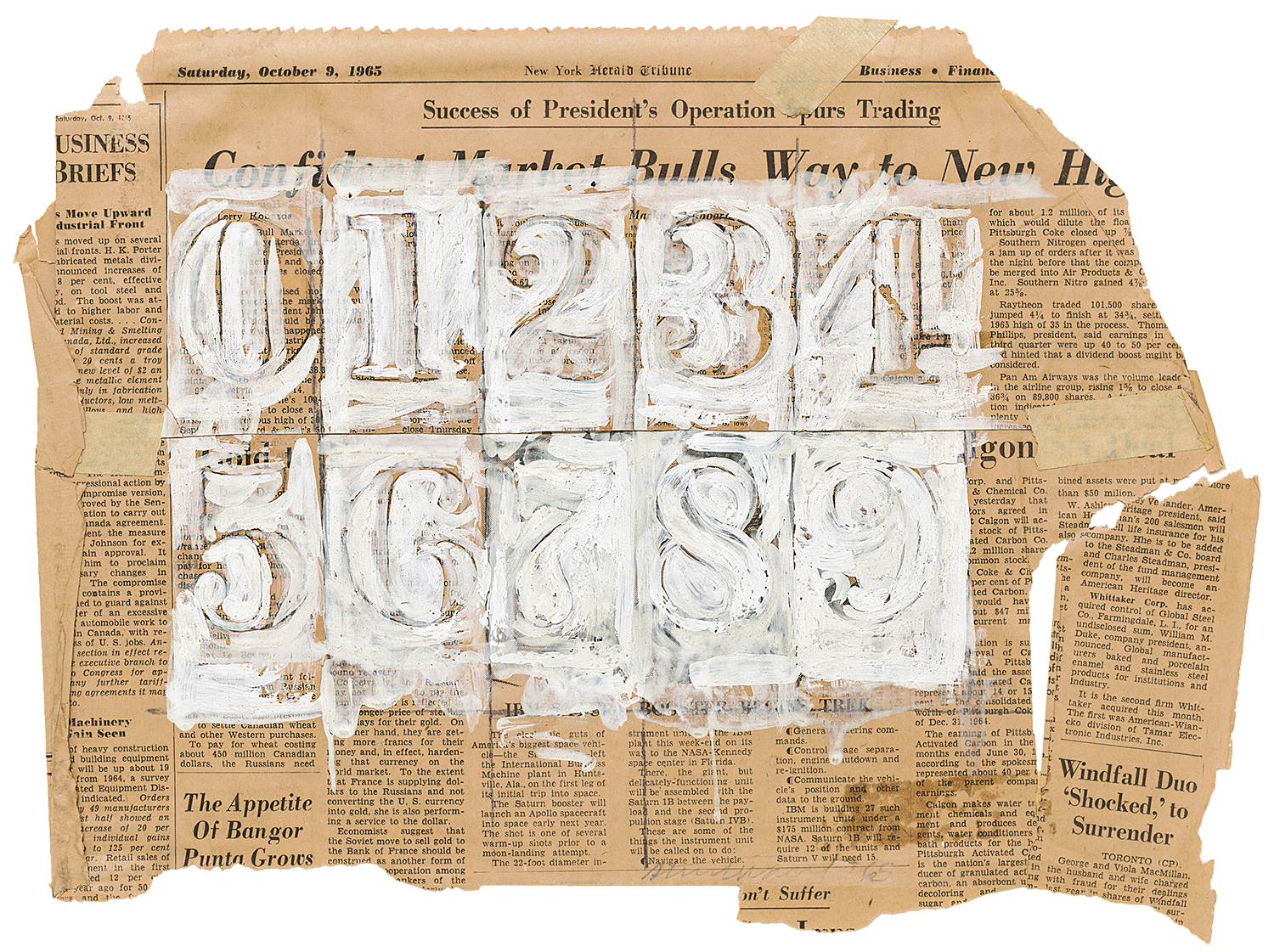
Maurizio Cattelan: Are you comfortable making videos that are pretty borderline, morally?
Neïl Beloufa: I create representations of the world, which means I’m dealing with what actually exists, without masking or judging it, as a way to force the viewer to face reality. Answering yes or no to this question is perhaps less important than saying that I believe communicating my own view of the world would be inappropriate — it would be a sort of absurd propaganda led by one person who doesn’t know any more than another. I don’t think that that is the role of the artist. Art should really allow us to step back from the world, and it shouldn’t illustrate messages or propose grand theories. Ideologies are the enemy, and singularity is the enemy too. In fact my work tries to get rid of any kind of moral judgment between good and evil, as well as any dichotomy between fiction and reality.
For example, La domination du monde (2012) and Kempinski (2009) are videos that replicate notions tied to racism and exoticism while giving the impression that they’re very well-intentioned. They’re neither true nor false. It’s an attempt to put viewers in an uncomfortable position between a paternalistic Western perspective and aninteresting or amusing image. I hope those works help the people watching them to step back, to take a position and think about this imagery, rather than blindly accepting it — or me. Ultimately, it’s about refusing a certain form of authority coming from me or from the medium.
MC: Is it necessary to be tasteless? Does it have more popular appeal?
NB: I was brought up to have good taste. Nonconformity was about identifying the most vulgar features of popular mainstream culture. Today I no longer think there’s such a thing as a good or bad image, and that’s why I try to look at the world without putting information into any kind of hierarchical order. In this sense, this is a political gesture. I try not to leave anything out.
MC: Why make installations with videos?
NB: I like interfering with my own authority because I don’t want my videos to persuade or influence the viewer in a straightforward fashion. I’m interested in double-edged devices. Indeed, the installations use the same dynamics as video, but they augment and complicate understanding by layering stuff over the apparent message. Their purpose is also to avoid playing out the kind of theatrical devices that are so effectively used in movies or churches. But I have to say I also just like building things: it’s a way of learning about materials, trying stuff out, putting myself at risk. Most of all my work is about how different elements and signs relate to each other. I focus more on the relationship between the artwork and the viewer than on the artwork itself, and I like creating a situation where a viewer has to connect ideas with forms or a narratives.

MC: The mass of digital images and the redefinition of the way art is distributed seem to be moving us away from the real experience of artworks. Your sculptures are distributed as photos but your films are as films…
NB: Even if it’s a bit sad, I think it suits me that way. I like the fact that everything is mediated by documents because they’re such perverse tools. It’s hard to understand my work from photographs, so I get the impression that people find them more interesting than they actually are. I like the idea of a hyperreal world where signs of the existence of a phenomenon replace the phenomenon itself. You yourself have made some pretty photogenic artworks, haven’t you?
MC: Yes, I guess I’m haunted by the power of strong images. You instead are much more “atomized” in a way. The work is not offered to the viewer immediately, don’t you think?
NB: Again, I often lie to myself and dream about not being authoritarian. Communication is the enemy, and to some extent avoiding “one-liner” works is in the service of that resistance. I think of myself less as a sculptor, more as an editor; my work happens in the relationship between the viewer and the work — not in the frame of the work itself. The relationship I intend to build is “theoretically” open-ended and should lead to questions rather than answers or explanations. I want to make the viewer responsible for what they decide to understand. I don’t want them to trust me. I want a viewer to treat me with the same suspicion that the work encourages them to treat mainstream imagery.
But again, by trying not to make propaganda, I make a kind of propaganda of my own; I end up being just as authoritarian a communicator. It’s a permanent struggle in the work that is doomed to fail. The show that is currently up at the ICA in London and at the Walter Phillips Gallery at the Banff Centrepretty much deal with theseideas.
MC: We often hear the term “post-internet.” Is this of any interest to you?
NB: Godard said: “I’ll only believe in an image produced by a computer when computers are programmed by blind people.” In the West there’s nothing new under the sun except the fact that the nerd has officially taken over from the alpha male. Right now, humanity is collectively brainstorming how best to organize and process so much information (just think about Wikipedia, Google, and so on). In formal terms, that might be why we are seeing so many tubular steel structures or artworks involving shelves or hangers — including mine. This is probably just a hasty illustration of computing or the Web, while others are simultaneously using ceramics or tie-dye painting, which, by contrast, give the impression of being artisanal. We see this in several current artistic practices, and it’s not fundamentally different from what was being done before.

MC: I’ve noticed that your sculptures are often human scale.
NB: That’s true. Often 1.8 meters or eye height, or sometimes the height of a desk or a household pet. I like things to stay human. It’s a bit silly, but it’s also the reason why I like visible failures, lack of efficiency and a sense of messiness in my pieces. It’s a way of reacting to a world in which everything is turned into a productive industry, and you only feel you exist if you’re growing. And in art, if it’s bad it doesn’t matter; you can say you did it on purpose — it’s not like surgery. And even if it’s not a conscious statement, I think the domestic formats you find in the work of many artists reflect an awareness of the art market’s role that, “naturally,” we quietly accept.
MC: You seem to be pretty interested in the works of other artists. What about curating shows as an artist? You seem to enjoy the exercise, as you’ve done it several times. Isn’t it tough?
NB: Actually, I’m not really that interested in the works. I mostly respect artists. I mean, looking at works I realized that I was mostly seduced when my ego was flattered and when basically I was recognizing something. In other words, I was enjoying having thoughts I already had confirmed for me in interesting ways. So in a way my judgment over artists is now mostly based on what I know about the person doing it. If a work at first seems weak, but if I respect the person who made it and I believe in their intentions, I trust the work.
When people ask me if I want to organize a show, I’m happy to do it. But I’m not a curator at all; I’m expert on nothing. And most of the stuff I’ve been curating is more intuitive editing than exhibition making. Also, since I produce shows 24/7 for myself, I’ve become an experienced technician of exhibitions. But I don’t think there has been any kind of authorial position when I’ve curated. It was more like playing songs on my iPhone during a party.

MC:You talk a lot about not setting up a hierarchy, and yet you say you “naturally” produce things for a market. Are you a Marxist or a free-market capitalist?
NB: I think that the amount of work I do is the most important value in my system, but I’m naturally happy when a work gets sold. The market is a means to an end for me, and I am a consenting tool for the market. I can hardly criticize something I accept and belong to.
What I aim for, above all, is the autonomy of my pieces, which means I don’t want to have to talk about them to make them exist, and I don’t want to care about what context they’re in. Similarly, I look for financial independence so that I don’t have to wait for people to offer me projects before I produce them. I’d like my economic model to be like the one invented by the Wu-Tang Clan, but on a different scale. From their very beginnings, they laid down a set of rules that aimed at creating a hip-hop dynasty that would last for centuries. On a yearly basis, each member brought out a solo album with the support of the other members and with a different recording company, so as to control the market, avoid competing with each other and being number one each time. Every four years they produced a new album together, and at the same time they trained new members who would one day replace them. It worked until one of the members died, which made the collective albums less interesting.
It would be great to construct a similar system for the production of artworks. Artists would be responsible for the art production of their era: established artists would finance emerging artists, who would in turn finance the following generation. They would finance each other and feed the market and institutions without being dependent on them. Would you be a part of that?

MC: Why not? Are you trying to set a generational trend, a sort of group of like-minded artists like in the ’90s? Your generation seems much more individualist though. How can you believe in the power of the “clan”?
NB: I don’t like communities when they’re about stating a message or an image. Meanwhile, I don’t know why between me and my government there shouldn’t be a medium-sized structure: something between me and my bank, or me and Fed Ex. Because in each conflict with them I lose because I’m too small. Maybe we could start unionizing the art world. Even though I agree with that, at the same time I am part of a weird, hardcore, liberal, anarchistic, individualist industry. There is a kind of super-vulgar notion of singularity in the way we work. I’m not really sure what to believe.
MC: What’s your relationship to dealers, collectors, curators, critics?
NB: I’m not super professional, although I try to be. So, basically, I try to consider humans as humans, and not to have relations with people whom I don’t like as human beings. I sincerely hope that I don’t discriminate between someone with or without power; but I definitely bend sometimes, and then get crazily guilty about it.
MC: Are you a cynic?
NB: No, I’m not.





